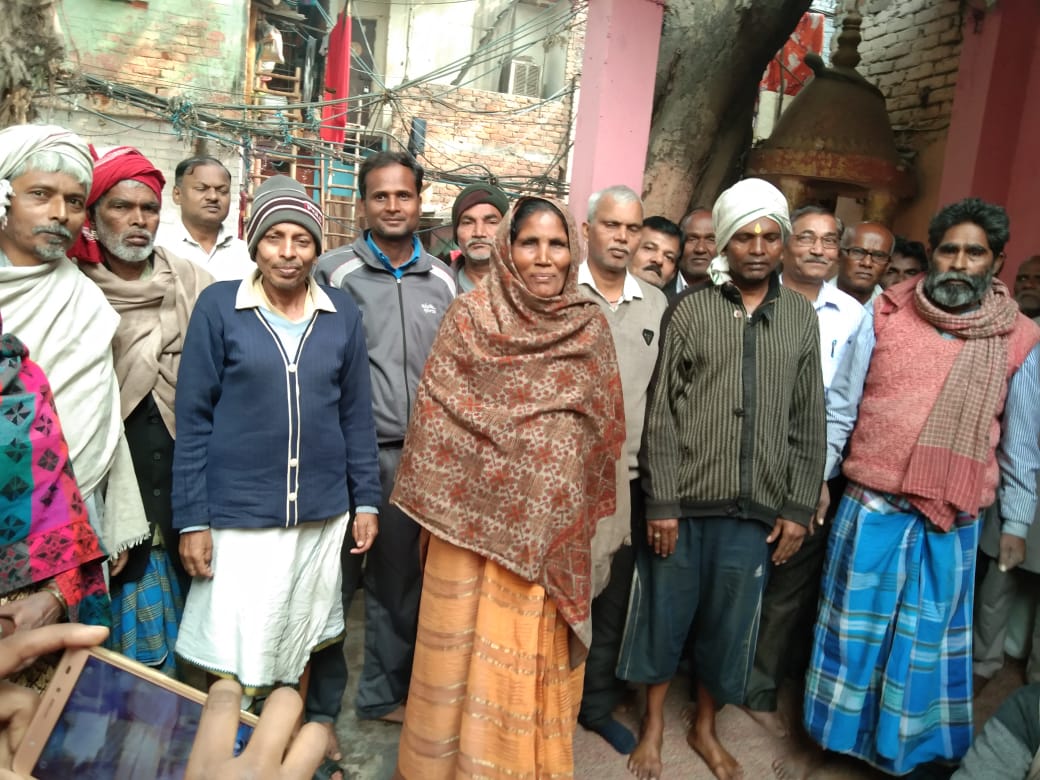Parvati, Bati Bai and Mamta are construction workers living in a slum called Delhi Sabar Dairy New A Block. They rejoiced when their children received scholarships for their education. Similarly when Suman received maternity benefit she felt very happy .
In Hyderpur Nirman Camp, a resettlement colony of Delhi, when Radhey Shyam started getting a pension of Rs. 3000 per month , which increased later, he was very thrilled
These are a few examples of construction workers who have benefited from the two social security laws enacted for the construction workers of the entire country in 1996. These laws were based on providing a range of social security benefits to construction workers by raising funds through a cess of one per cent on building construction costs, administered by building and construction worker boards set up in all states and union territories. Through this cess for the first time thousands of crores of Rs. were collected for the welfare and social security of construction workers and their families.
However implementation of the laws remained poor for quite some time and welfare measures lagged behind even though funds were available. At this stage the National Campaign Committee for Construction Labour (NCC-CL) , which had earlier played an important role in the long campaign for the enaction of legislation, now knocked on law courts for proper implementation of these laws and got some important favorable decisions. In particular the directions given by the Supreme Court in 2018 were significant and had raised a lot of hope among construction workers.
Although actual benefits had reached only a very small percentage of construction worker households, this had raised high hopes among the remaining workers that it is only a matter of time before the various benefits under these two 1996 laws will also reach them.
However very recently a new threat has appeared as four new labour codes are replacing 44 existing labour legislations. There is increasing uncertainty of the extent to which the new provisions will retain the strong points of the 1996 laws.
One important apprehension is that new provisions will also ask workers to make big contributions while the 1996 laws were financed entirely by the cess on construction activity. This kind of burden cannot be borne by workers who have very low earnings and get work for less than 15 days a month on daily wage basis. What is more, it is not at all practical to collect regular contributions from highly scattered workers who keep changing the place of their work very frequently. If a very unworkable system is created, then the protective legislative provisions may simply collapse.
Why should a new difficult -to-implement system be created when a relatively much easier to implement system already exists? Why not instead concentrate on the directions of the Supreme Court for improving the implementation of the 1996 laws? Why should an existing system which is not at all burdensome for workers be replaced by a system which is likely to be very burdensome for workers?
Questions such as these are being increasingly asked now. In the two colonies of construction workers mentioned above where I recently spoke with construction workers in group meetings, they said with one voice that instead of diluting the laws strong steps should be taken for the better implementation of these laws. People are angry about any steps to dilute these laws obtained after a long struggle and they have been joining protest meetings. Their struggles and demands should be widely supported.
Bharat Dogra is a freelance journalist who has been involved with several social movements and initiatives.














